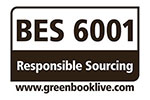01732 360 095
This article aims to explain the meaning of different fire classifications for building products, what they entail, and the products from Newton Waterproofing that carry these fire classifications.
When it comes to fire ratings, to achieve classification according to their end use application, construction products used in Europe must adhere to the EN 13501-1 standard on ‘Fire classification of construction products and building elements – Part 1: Classification using data from reaction to fire tests’.
EN 13501-1 separates all types of products into three categories:
-
- Construction products, excluding floorings and linear pipe thermal insulation products
- Floorings
- Linear pipe thermal insulation products.
To achieve classification, the products must undergo a combination of up to five rigorous tests designed to assess the product on a range of characteristics, including combustibility, heat levels, flame spread and smoke release.
The following five EN/ISO test methods are used in the EN 13501-1:
| EN 13823 | Reaction to fire tests for building products — Building products excluding floorings exposed to the thermal attack by a single burning item. |
| EN ISO 1182 | Reaction to fire tests for building products — Non-combustibility test. |
| EN ISO 1716 | Reaction to fire tests for building products — Determination of the gross heat of combustion (calorific value). |
| EN ISO 9239-1 | Reaction to fire tests for floorings — Part 1: Determination of the burning behaviour using a radiant heat source. |
| EN ISO 11925-2 | Reaction to fire tests — Ignitability of building products subjected to direct impingement of flame — Part 2: Single-flame source test. |
What is the EN 13823 Single Burning Item Test?
The fire technical test according to EN 13823, otherwise known as the ‘Single Burning Item’ or SBI test, evaluates a building product’s fire properties regarding heat release rate, smoke production, flame spread and burning droplets/particles.
The 21-minute test exposes the product to a 30kW gas-fuelled flame, the combustion gases are collected through a hood, where heat release and smoke production are measured, and flame spread and burning droplets/particles are visually observed.
The main use for the SBI test is as a basis for the fire classification to EN 13501-1.
What do the Different Fire Classifications Mean Within EN 13501-1?
The BS EN 13501-1 classification comprises three ratings. The first is the main Euroclass rating, which will be the letter A1, A2, B, C, D, E or F. A1 products are classified as non-combustible, A2 products are classified as limited combustibility, and B to F are classified as combustible in ascending order.
| Classification | Definition | Description |
| A1 | Non-combustible | No contribution to fire |
| A2 | Limited combustibility | Very limited contribution to fire |
| B | Limited contribution to fire | |
| C | Minor contribution to fire | |
| D | Combustible | Medium contribution to fire |
| E | High contribution to fire | |
| F | Easily flammable |
The second classification relates to smoke emissions during combustion. This is indicated by a rating of s1, s2 or s3, from highest to lowest performance. The third and final classification relates to the level of production of flaming droplets/particles during combustion. This is indicated by a rating of d0, d1 or d2, from highest to lowest performance:
| Classification | Level | Description |
| Smoke emission during combustion | S1 | Quantity/speed of emission absent or weak |
| S2 | Quantity/speed of emission of average intensity | |
| S3 | Quantity/speed of emission of high intensity | |
| Production of flaming droplets during combustion | D0 | No dripping |
| D1 | Low dripping | |
| D2 | High dripping |
What Newton Products Carry Fire Classification?
Oldroyd Xtf membrane

Newton Waterproofing has partnered with Oldroyd, Scandinavia’s leading supplier of tunnel membrane systems, and as a result, is able to design and install Oldroyd Xtf membrane as a cavity drain waterproofing system during tunnel waterproofing projects.
Produced in Norway, Oldroyd Xtf is the number one sustainable fireproof and waterproof solution for underground projects, and is distributed exclusively in the UK via Newton.
Containing environmentally friendly raw materials, Oldroyd Xtf is tested according to the EN 13501-1 standard for fire classification of construction products and, as a result, is classified to B-s2.d0, meaning it completely prevents burning droplets when exposed to fire.
HydroCoat 103 2K
Rated to A2-s1,d0, HydroCoat 103 2K is a cementitious waterproofing membrane with high adhesion that can be applied very quickly with an airless spray machine, as well as by hand. The liquid-applied membrane is designed for both the internal and external waterproofing of water-retaining and water-resisting structures, such as basements, reservoirs, water tanks, podium decks, balconies and parking areas.
Capable of resisting up to 10 bar of both positive and negative water pressure, HydroCoat 103 2K forms a hard coating with a degree of elasticity and a high chemical resistance, making it particularly suited for protecting concrete within sulphate contaminated ground.
HydroCoat 107 Elastic 2K
Rated to B-s1,d0, HydroCoat 107 Elastic 2K is a flexible, cementitious coating for the waterproofing and protection of concrete and masonry. The liquid-applied membrane can hand-applied or spray-applied over large areas very quickly, and is ideally suited to the waterproofing of reservoirs, tunnels, water tanks, basements and covered or buried decks.
With excellent adhesion and flexibility, HydroCoat 107 Elastic 2K is especially capable where the structure has both masonry and concrete elements and differential movement is therefore expected.
If you’d like to find out more about fire classification of construction products and building elements, get in touch with Newton Waterproofing today. You can call us on 01732 280548 or contact us online.
Speak to our friendly, expert team
Our staff are able to provide guidance for projects of all sizes, whether you require some general advice about damp or waterproofing, or support with technical drawings and specifications.














